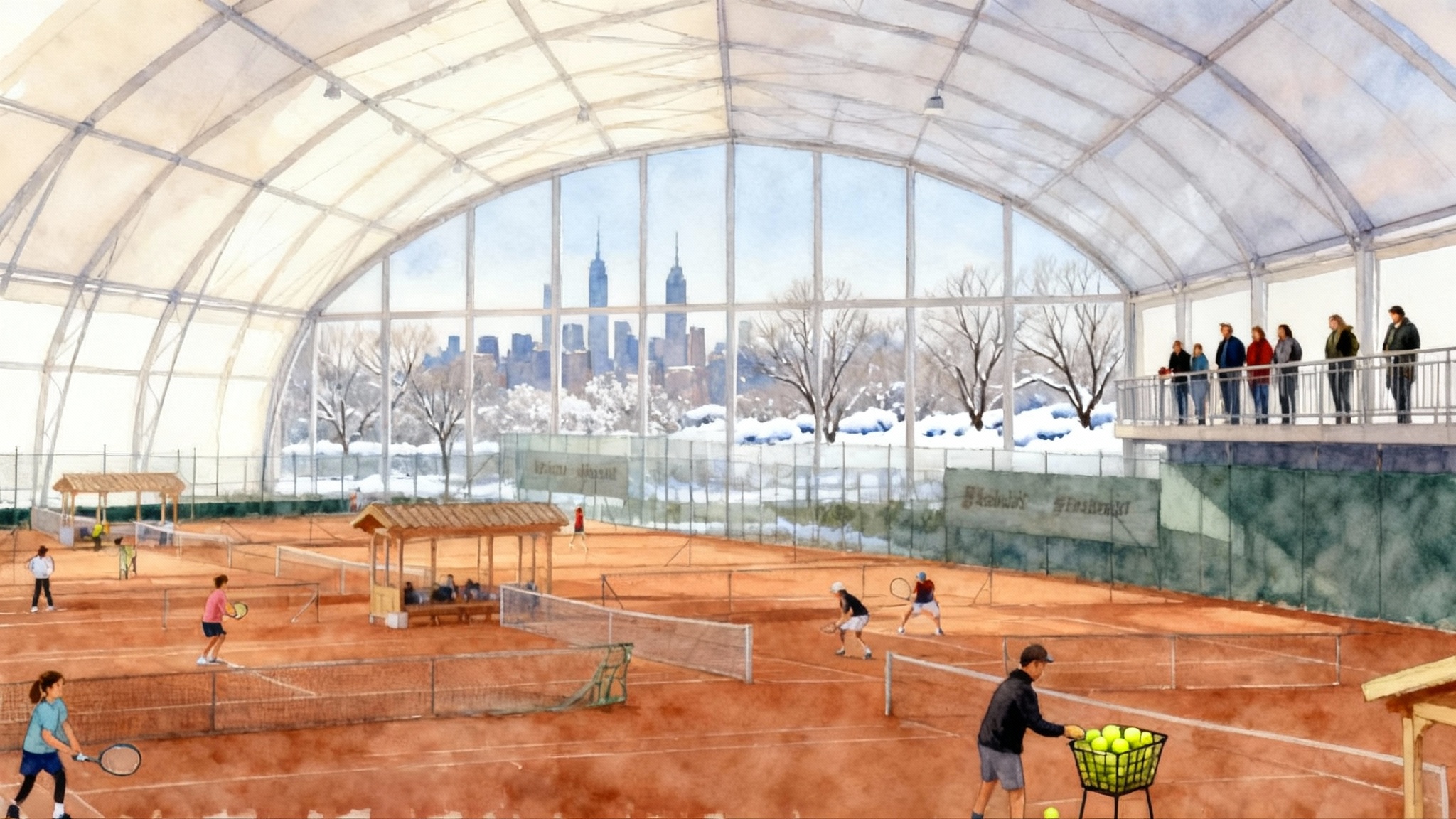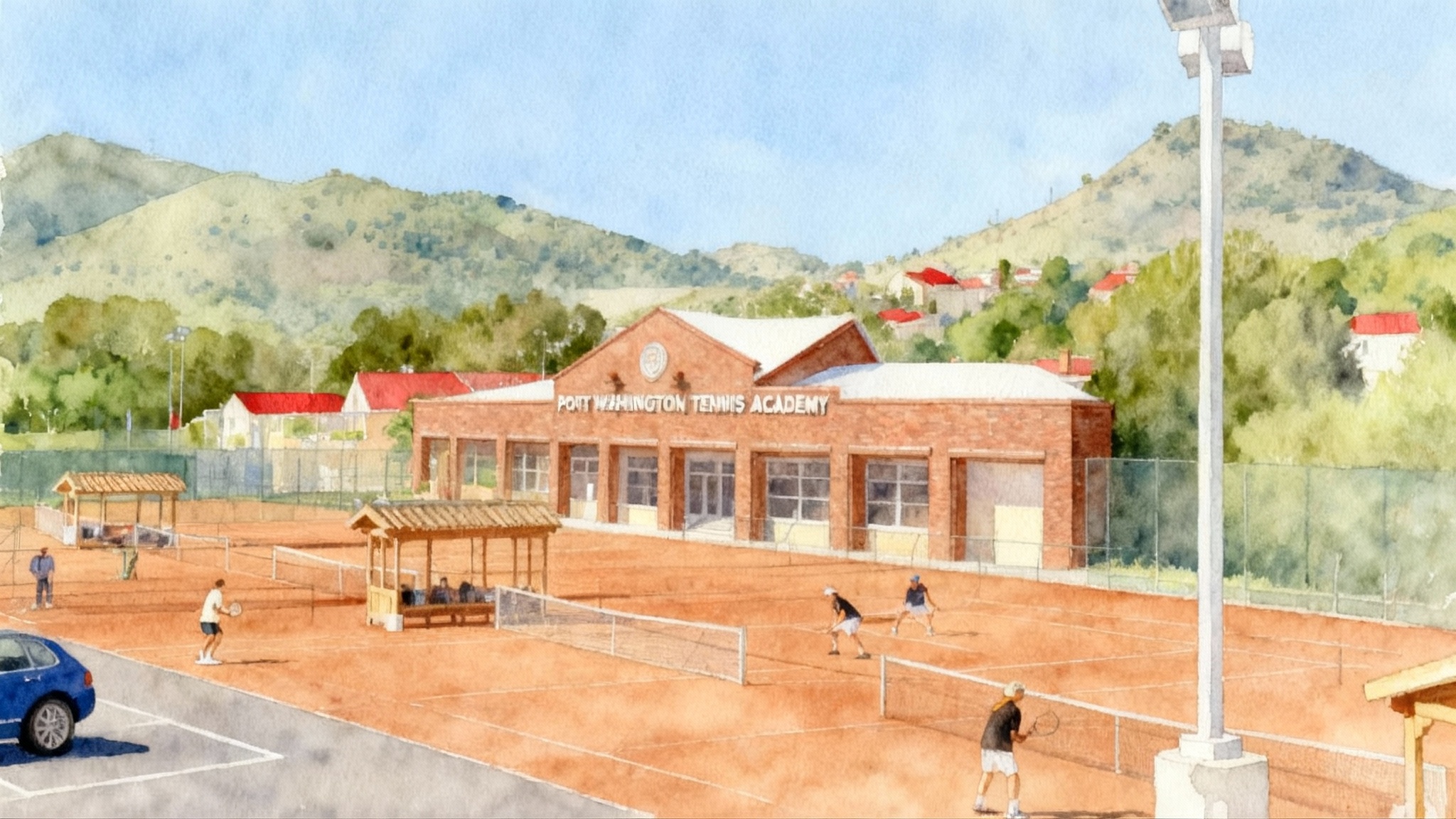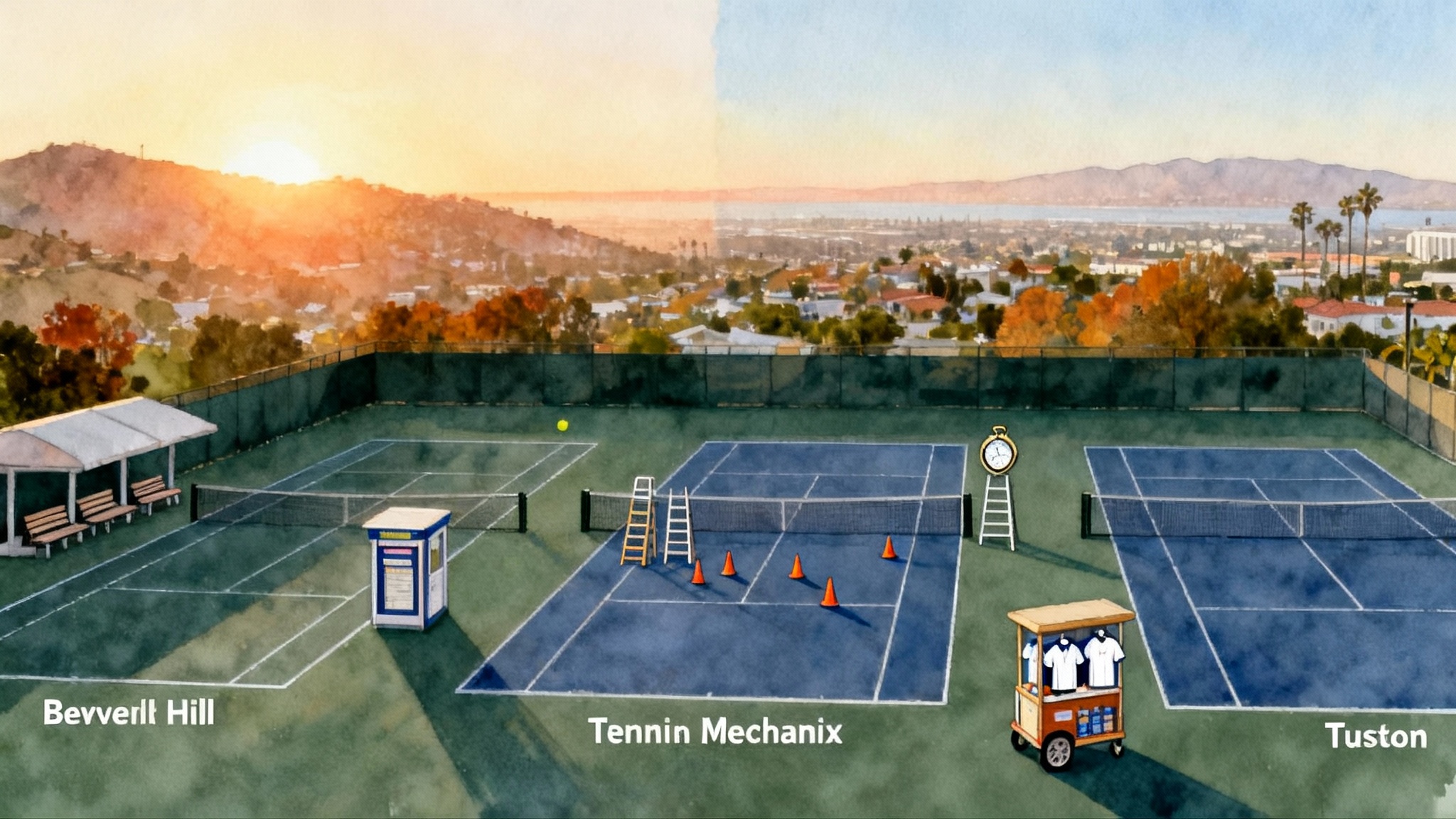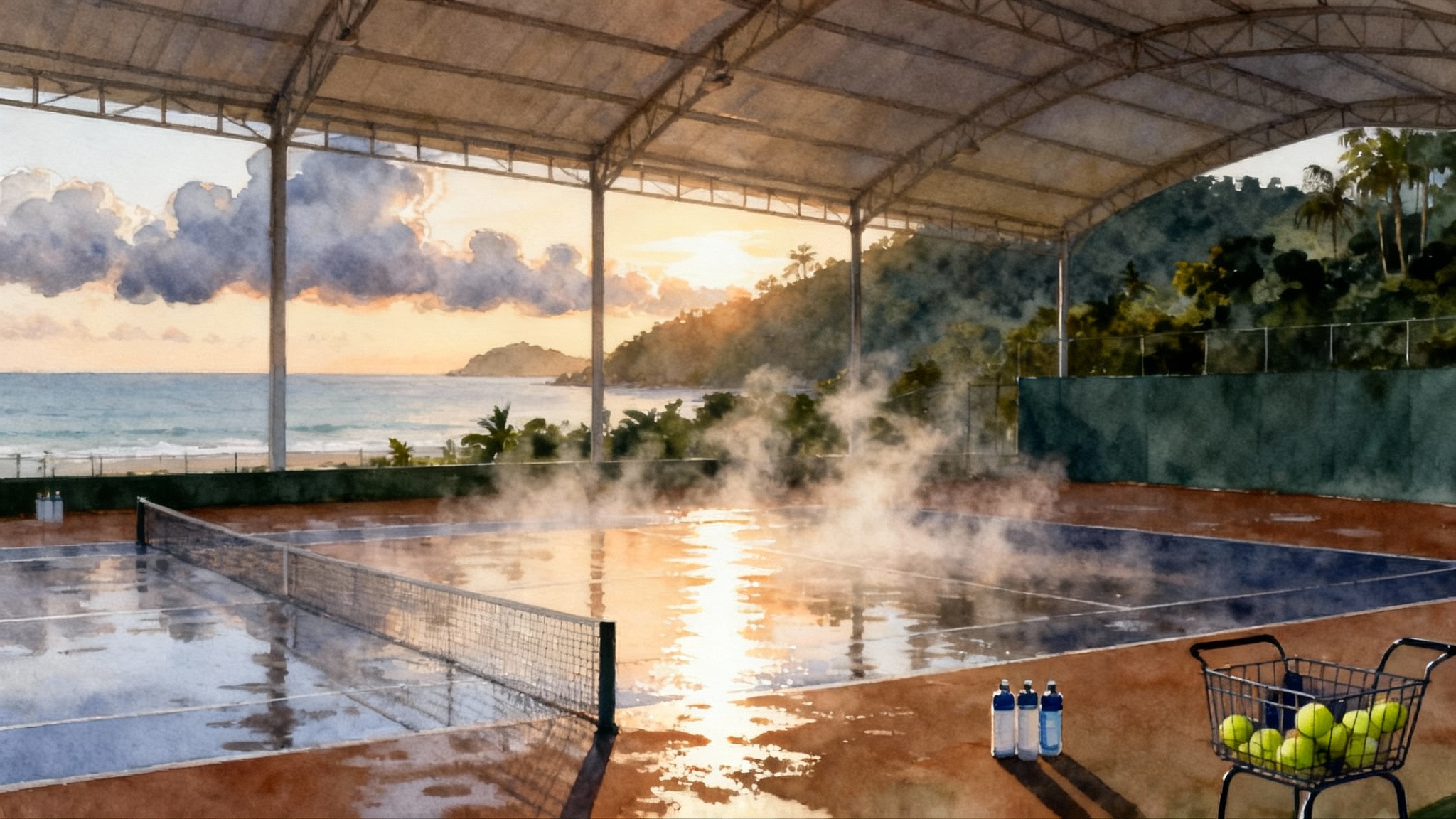Best Pacific Northwest Tennis Academies 2025–2026 Parent Guide
A rain-ready, Seattle to Portland guide to junior tennis academies. Compare indoor access, program structures, UTR match play, costs, recruiting support, tryout timelines, seasonal plans, and a decision checklist for families.
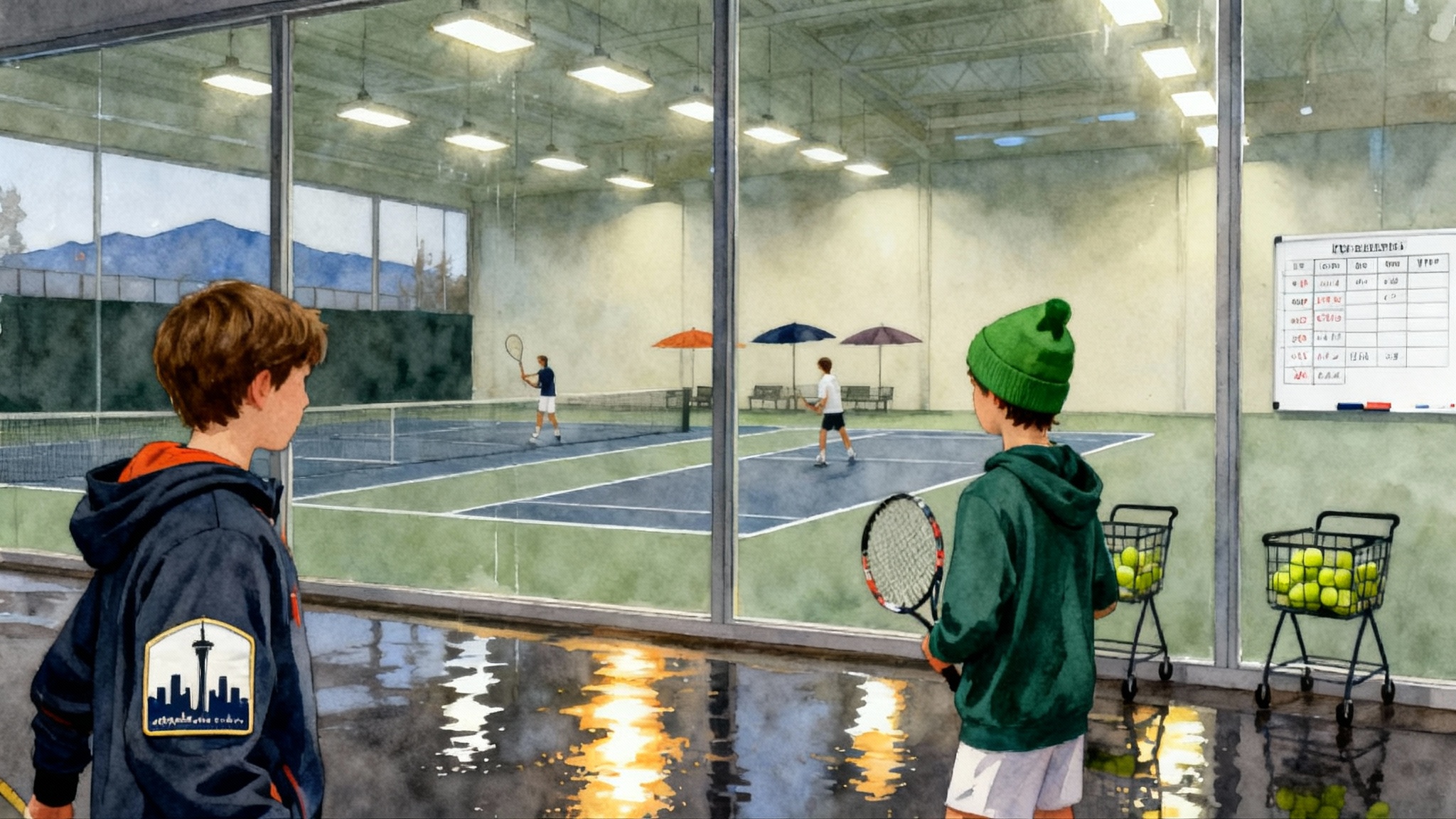
Why a Pacific Northwest academy choice is different
Parents in Seattle and Portland face a unique puzzle. From late fall through early spring, tennis lives indoors. Court time gets scarce, travel to matches takes planning, and a small difference in a program’s schedule can mean the difference between consistent reps and too many rain delays. That is why this guide looks beyond marketing language to the practical factors that truly separate one junior academy from another in the Pacific Northwest.
Here is the lens we use throughout:
- Indoor court access during peak rain months
- Program structure and coaching ratios
- Universal Tennis Rating match play and tournament pathways
- Total cost of participation across the year
- College recruiting support, from video to coach outreach
You will also find spotlights on Amy Yee Tennis Center Academy in Seattle and leading Portland programs, plus tryout timelines, a seasonal training plan built for wet winters, and a decision checklist for day-academy families.
How to use this guide
Think like a project manager. The goal is not to chase a brand name, it is to solve for consistent training, competitive matches at the right level, and sustainable family logistics. As you read, jot down three specifics for each program you consider: how you will secure indoor court hours from October through March, how your child will get rated match play every week, and what the total monthly budget looks like when you include travel and stringing.
To make comparisons easier, we define a few terms:
- Universal Tennis Rating, often shortened to UTR, is the common rating that drives match-making and roster spots in most modern junior pathways. For parents new to the system, start with the official UTR overview.
- High performance refers to groups that require an evaluation, expect tournament play, and typically run three to six days per week.
- Day academy means a program that fits around a traditional school schedule rather than a full-time residency model.
For cross-market context, see Best Bay Area Tennis Academies 2025–2026 and Best Midwest Tennis Academies 2025–2026.
Seattle spotlight: Amy Yee Tennis Center’s Academy
Seattle’s public flagship, Amy Yee Tennis Center Academy, is known for its indoor capacity, diverse player base, and steady ladder of youth classes that feed into evaluation-based training groups. For many families, it is the most accessible way to secure consistent winter tennis without a private club membership.
What to know:
- Indoor access. The center’s year-round indoor courts give juniors reliable reps during the wettest months, and the facility’s court reservation system favors structured programming, which helps academies keep groups on schedule.
- Program structure. The academy track typically runs multiple days per week, with clear criteria for movement between groups. Evaluations focus on ball tolerance, rally tempo, and patterns, not just ball speed. Expect feeding drills, live play, and situational points.
- UTR match play. Staff facilitate level-based singles blocks and encourage frequent Universal Tennis events to stabilize ratings. Parents should ask how many rated games the academy expects per month and how coaches adjust drills based on rating bands.
- Coaching ratios. Target a maximum of 1 coach per 4 to 6 players for live-ball sessions. Feeding blocks can stretch slightly larger if courts are tight, but match play should stay small.
- Costs. As a city-operated site, per-hour training can be more affordable than private clubs. Budget for group fees, tournament entry, and stringing, which adds up quickly when play frequency rises.
- College support. The staff track video highlights, help with realistic school lists, and advise on unweighted and weighted academic profiles. You want to see a written recruiting process and sample email templates, not just verbal encouragement.
If you are evaluating Amy Yee specifically, start by scanning current Amy Yee program details. Then ask for the academy calendar, evaluation windows, and match play expectations in writing. This keeps everyone aligned once school picks up.
Who it fits: motivated juniors who need dependable indoor time without a club membership, families who prefer a public setting, and players building toward consistent sectional or state-level competition.
Pro tip: if you are late to fall enrollment, ask about mid-block entry tied to an evaluation. City programs often have waitlists, but a player with a clear rating and recent tournament results can sometimes slide into a spot when another family travels or changes sports.
Other Seattle high performance options worth a look
Seattle and the Eastside offer several strong day-academy environments. When you call, focus on how they secure winter court time and how they place players by rating.
- University-affiliated centers. College facilities that host community programs often operate evaluation-based junior groups. Ask how the academy balances public court demand with training blocks on match-heavy weeks.
- Private indoor clubs. These usually require membership but can offer smaller ratios and deeper weekday blocks. Clarify non-member access rules for tournaments and whether your junior can join match play without a full family membership.
- Neighborhood or school-based bubbles. Seasonal inflatable structures pop up at parks and schools each fall. These can be hidden gems for winter reps. Confirm whether the academy keeps those courts at consistent hours after daylight savings shifts.
Questions to bring to every call:
- What are the fall and winter daily start and end times for academy groups?
- How many Universal Tennis rated matches per month do you expect at my child’s rating?
- What are the coaching ratios for live ball, point play, and video review?
- How does the academy manage court crunch during holidays and midterms?
Portland spotlight: city and club programs side by side
Portland’s junior scene blends strong public centers with private clubs that run selective training groups. The key difference from Seattle is commute spread. Many Portland families live near one set of indoor courts and far from others, so it is smart to build a plan around whichever facility you can reach three or more times per week without stress.
Programs parents often compare:
- Portland Tennis Center. A public hub with multiple indoor courts, deep recreational pipelines, and evaluation-based tracks for advancing juniors. Families like the access to level-based events and the ability to add practice sets on neighboring courts when space opens.
- Tualatin Hills Tennis Center in Beaverton. A park district anchor with indoor courts and an established junior pathway. Ask how often the high performance groups enter Universal Tennis events as a cohort, and whether the center hosts monthly match sessions for academy players only.
- Lake Oswego Tennis Center. Known for accessible coaching staff, clear movement criteria, and indoor options that make rainy days predictable. Clarify stringing turnaround and whether staff provide match video on request.
- Stafford Hills Club and other private clubs. These can offer polished environments with smaller groups and on-site fitness. Confirm if non-member juniors can join high performance blocks, what the guest fees are, and how the club prioritizes junior use during prime hours.
- Vancouver Tennis Center just over the river in Washington. Often draws Portland families willing to cross the bridge for steady indoor courts. The commute can be worth it if the schedule lines up with school and if the center runs frequent rating-calibrated match play.
What to focus on when you compare Portland options:
- Indoor court guarantees from October through March
- Weekly rated match expectations and whether events run at the facility
- Coaching continuity across school-year blocks, not just summer
- Strength and mobility built into the calendar, not added as an afterthought
UTR match play, ratings, and tournament pathways
For most college-bound juniors, the Universal Tennis Rating is the north star that guides placement in practice groups and draws in weekend events. Treat it like a bank account. Deposits are competitive matches, withdrawals are long gaps without play. The academy plan should guarantee frequent deposits.
What good looks like:
- One to two Universal Tennis rated sessions per week, either in-house or at nearby events
- Clear rating bands for practice courts to keep live ball and sets level-appropriate
- Coaches who track rating movement and adjust tournament schedules when confidence dips
If parents or players need a primer, read the earlier link to the official overview, then ask each academy how they convert that framework into weekly match habits. The best programs post a monthly calendar with rated play penciled in before the month begins.
What programs cost in 2025–2026
Sticker prices vary, but the structure is surprisingly consistent once you add the real line items. Use these planning ranges to build your family budget. Actual numbers will differ by facility and membership status.
- Group training. Public-center academies often land in a mid-hundreds monthly range for two to three sessions per week. Private-club high performance blocks can run higher, especially at five to six days per week.
- Match play and tournaments. Universal Tennis events and junior tours add up. Plan for multiple entry fees per month, plus occasional travel for level-appropriate draws.
- Private lessons. Useful ahead of key tournaments or to fix a recurring pattern, but they add quickly. Slot them strategically rather than weekly by default.
- Racquet, stringing, and shoes. Indoor hard courts are abrasive. Players who compete weekly may restring often and rotate shoes more than once per season.
The best way to pressure test affordability is to model a single representative month in winter, when indoor demand peaks, and another in midsummer, when families add travel competition. If both months fit your budget without strain, the year is likely sustainable.
Tryout and evaluation timelines
Most day academies operate on school-year blocks that start in late August or early September, then refresh in January. Summer adds separate daytime blocks. To avoid waitlists, build a timeline around these checkpoints:
- April to May. Email program directors to request evaluation windows. Ask for prerequisites by rating and tournament history so you can plan spring events accordingly.
- June. Lock in summer training days and any travel tournaments. Confirm who leads match play when coaches travel with teams.
- Late August. Attend evaluations or invite coaches to watch a rated match. Request written placement and the weekly plan, including recommended tournaments for the first eight weeks.
- December. Re-evaluate placement ahead of the winter block. Many programs shuffle courts at this point to account for growth spurts and rating changes.
Always ask whether tryouts are required for every level and whether an existing rating or coach referral can place you without a formal tryout.
A rain-ready seasonal training plan
Use this blueprint to organize the year around Pacific Northwest weather. It balances technical blocks, match play, and rest so indoor time delivers the most value.
- October to December, skill and volume. Three group sessions per week plus one to two rated match blocks. Technical goals might include adding a reliable serve pattern and a high-percentage crosscourt neutral ball. Fitness focus on durability and movement efficiency.
- January to February, strength and specific patterns. Maintain two to three group sessions, add gym sessions for lower-body strength and shoulder health. Match play stays weekly, but volume can dip slightly during midterms. Coaches should script pattern-based points that help players win indoors, like first-strike serves and backhand depth.
- March to April, outdoor transition. As dry days return, players rehearse footwork for higher bounces and wind. Keep one indoor session for quality control, then add outdoor sets, even if the air is cool. Racquet setup might shift to slightly lower string tension for outdoor conditions.
- May to June, tournament ramp. Nudge match volume up, keep one technical session to protect mechanics, and simulate tiebreaks at the end of practices. Coaches review scouting notes for likely opponents.
- July to August, travel and consolidation. Choose events that match the player’s current rating band, not just prestige. Schedule a short reset week between trips to protect motivation and manage soreness.
- September, assessment and rebuild. Review match video, update goals, and test a small technical change before the indoor-heavy block returns.
Decision checklist for day-academy families
Print this and bring it to facility tours or coach calls.
- Indoor access. Which courts do you control from October through March, on what days, and at what times?
- Weekly match plan. How many rated matches are expected per month at my child’s level, and who organizes them?
- Coaching ratios. What are the player to coach ratios for live ball, point play, and video review?
- Movement criteria. How does a player move up a group, and how is that communicated to families?
- Coaching staff. Who actually runs my child’s court, and how long have they been with the program?
- Data and video. Do you offer video review, and do coaches keep notes on patterns and percent winners and errors?
- Fitness integration. Who leads strength and movement, and how do you coordinate it with match days?
- Academic fit. What homework plan is expected on late practice nights, and how do you handle school trips or exams?
- Calendar transparency. Can I see an eight-week plan with rated events, training themes, and rest weeks?
- Budget clarity. What is my total monthly cost in winter and in summer, including tournaments and stringing?
Commute math, carpooling, and school fit
A program that looks perfect on paper can fail in practice if the drive is long or the schedule fights with school. The simplest fix is to run commute math. Multiply your round trip minutes by the number of weekly sessions. If that number sits above two and a half hours, find a carpool or choose a closer court. You can buy back those hours with a slightly higher per-hour fee if it means more sleep and homework time.
Ask about study space at the facility, quiet areas for online classes, and whether staff help coordinate carpools. Families underestimate how much smoother a season runs when players ride together and parents share the load.
Scholarships and financial aid
Public centers and some private clubs set aside need-based assistance or offer junior work programs. Ask two direct questions. First, what percentage of high performance players receive aid. Second, whether the aid applies to tournaments and match play fees or only to base tuition. A small amount of targeted help toward rated events often does more for a season than a modest discount on group sessions.
Red flags to watch for
- No written calendar. If you cannot see a training and match plan before you pay, keep looking.
- Chaotic courts. If groups regularly outnumber available courts, live ball turns into waiting lines, which reduces development.
- One-size-fits-all drills. Advanced players need pressure constraints, not only cooperative rallies. Younger players need simple targets and clear success metrics.
- Heavy talk, light matches. If rated matches are rare, UTR will drift, and confidence will slide with it.
- Coach turnover. Stable leadership on your child’s court is more important than a big name on the website.
Putting it together: a sample week
Here is a model schedule for a high school player targeting college tennis while staying in a day-academy structure.
- Monday, group training focused on first-serve percentage and plus-one patterns, 90 minutes, then 20 minutes of shoulder care.
- Tuesday, rated match play, two out of three short sets or full sets depending on homework load.
- Wednesday, light technical session or private lesson, 60 minutes, emphasize backhand depth and serve returns.
- Thursday, gym session for lower body and core, 45 minutes, finish with mobility.
- Friday, group training with point construction and tiebreak simulation.
- Saturday, tournament play or practice sets, afternoon recovery walk and stretch.
- Sunday, rest and video review, set three goals for the next week.
Swap days to match your facility calendar, but keep the pattern: two to three quality group sessions, one to two rated match windows, one targeted strength block, and one day that protects motivation.
Final word: pick the calendar, not the brand
In the Pacific Northwest, the winners are families who choose programs that guarantee court time, weekly rated matches, and a routine that fits school. If Amy Yee’s public setting gives you reliable indoor hours and a clear match plan, embrace it. If a Portland center gets your child competing in the right rating band every week and home before ten on school nights, that is a win. Ask for the calendar in writing, confirm who runs the court, and make sure the numbers work for your family. Do that, and the rainy season becomes your secret advantage, a quiet stretch of focused work that sets up a great spring and summer of competition.


